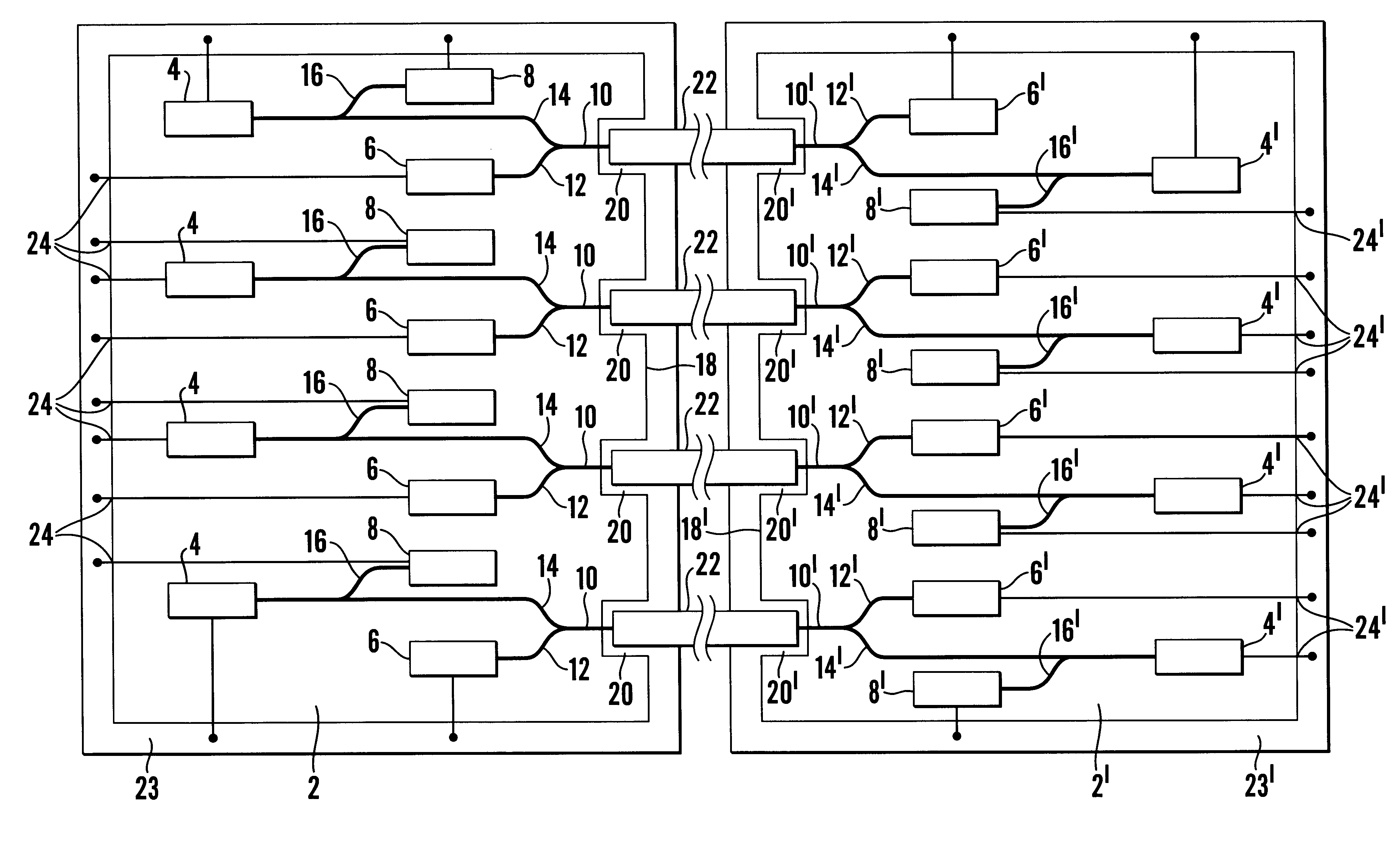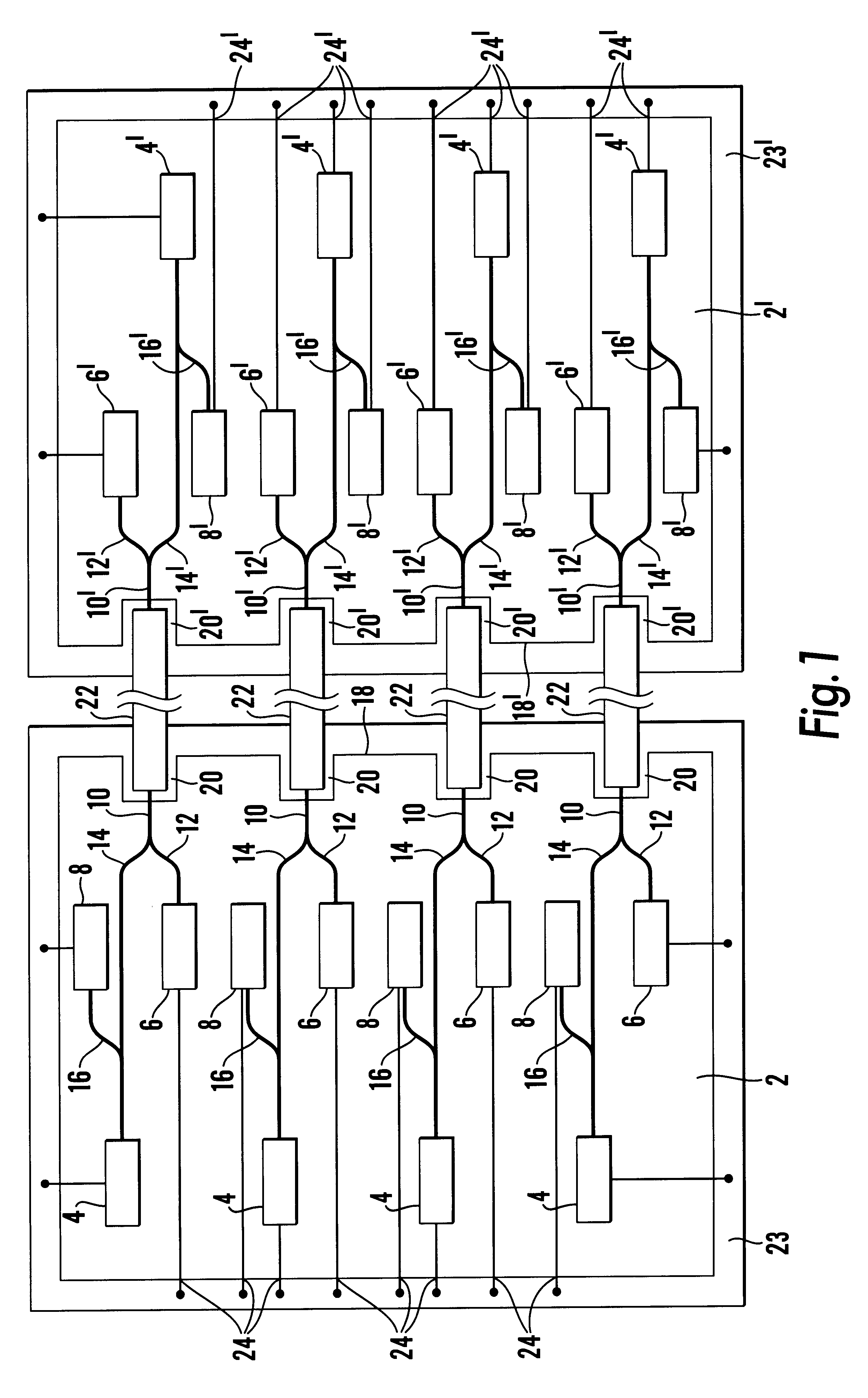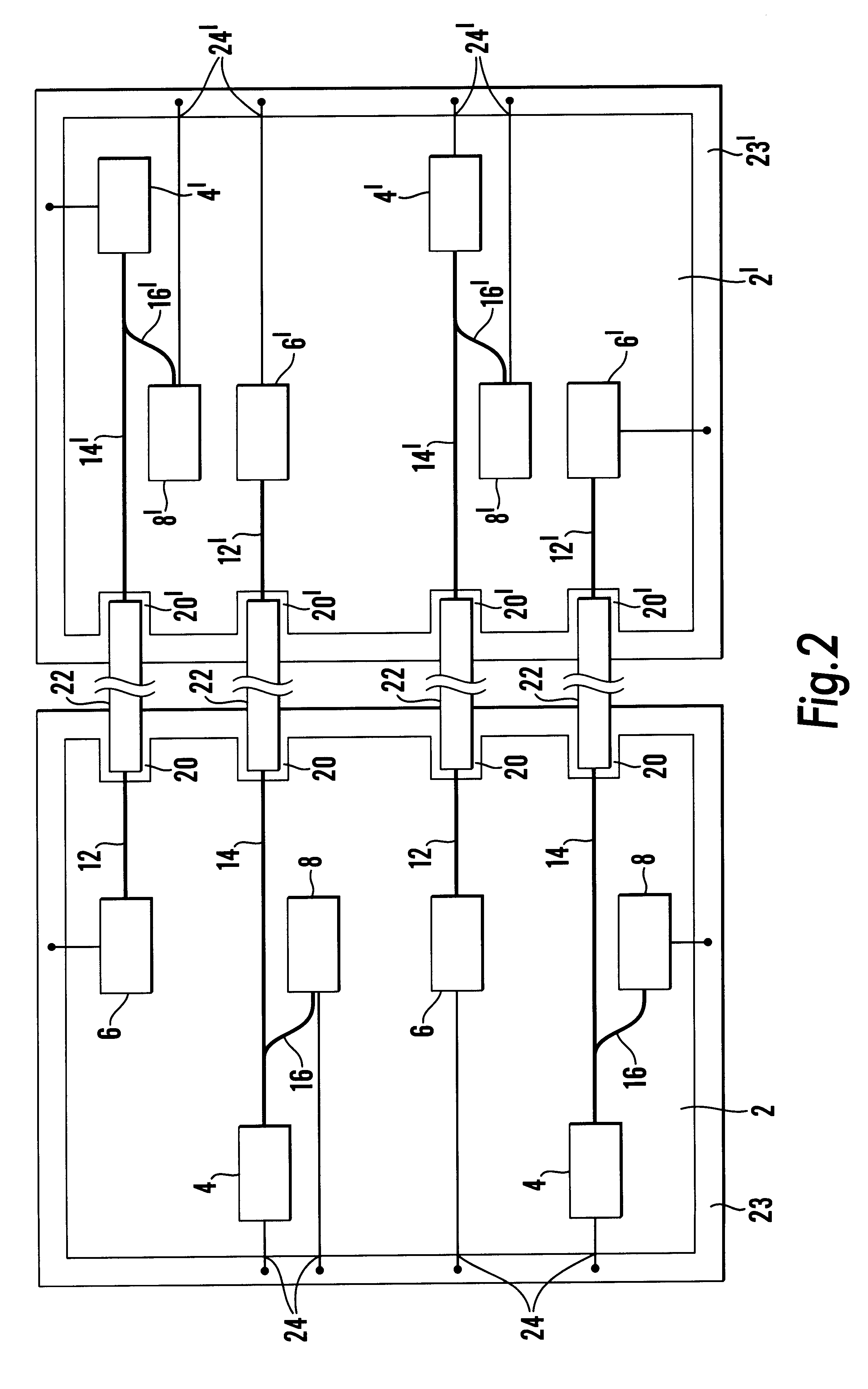Optical link between electrical circuit boards
- Summary
- Abstract
- Description
- Claims
- Application Information
AI Technical Summary
Benefits of technology
Problems solved by technology
Method used
Image
Examples
second embodiment
FIG. 2 shows the invention in which uni-directional optical fibre connections are provided between two silicon-on-insulator chips. The components shown in FIG. 2 are given the same reference numerals as the corresponding components shown in FIG. 1. The arrangement is similar to that of FIG. 1 except that the rib waveguides 12 and 14 connect the photodiodes 6 and lasers 4, respectively, to separate optical fibres 22 rather than communicating with a single optical fibre for bi-directional communication between the chip 2, 2'.
third embodiment
FIG. 3 shows the invention in which wavelength division multiplexing (WDM) means 25 are used so the light signals from a plurality of lasers 4, each producing an output of a different wavelength, can be transmitted by a single optical fibre 22 between two chips 2, 2'. The WDM means 25 connects to the fibre 22 by a single rib waveguide 26 if the optical fibre 22 is used to transmit bidirectional signals. The WDM means 25 also acts to de-multiplex the signals received from the fibre 22 and direct them to the appropriate photodiode 6, according to the wavelength of the received signal. The laser 4 and associated photodiode 6 on each chip may operate on the same wavelength and be connected to the WDM means 25 via a Y-junction (similar to the connection of the lasers and photodiodes to the fibres in FIG. 1) or they may operate on different wavelengths (to reduce cross-talk between the photodiodes and the laser). In this case, they may have separate connections to the WDM means 25 as show...
PUM
 Login to View More
Login to View More Abstract
Description
Claims
Application Information
 Login to View More
Login to View More - R&D
- Intellectual Property
- Life Sciences
- Materials
- Tech Scout
- Unparalleled Data Quality
- Higher Quality Content
- 60% Fewer Hallucinations
Browse by: Latest US Patents, China's latest patents, Technical Efficacy Thesaurus, Application Domain, Technology Topic, Popular Technical Reports.
© 2025 PatSnap. All rights reserved.Legal|Privacy policy|Modern Slavery Act Transparency Statement|Sitemap|About US| Contact US: help@patsnap.com



